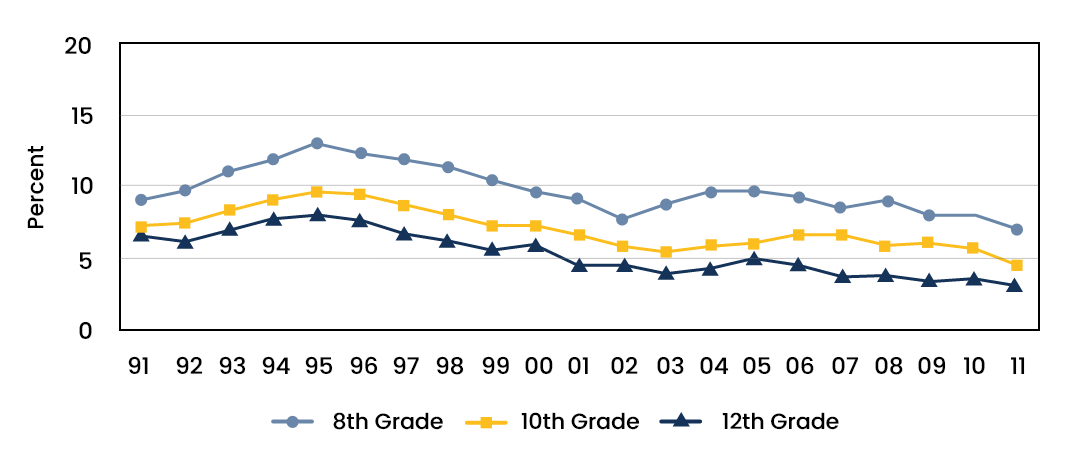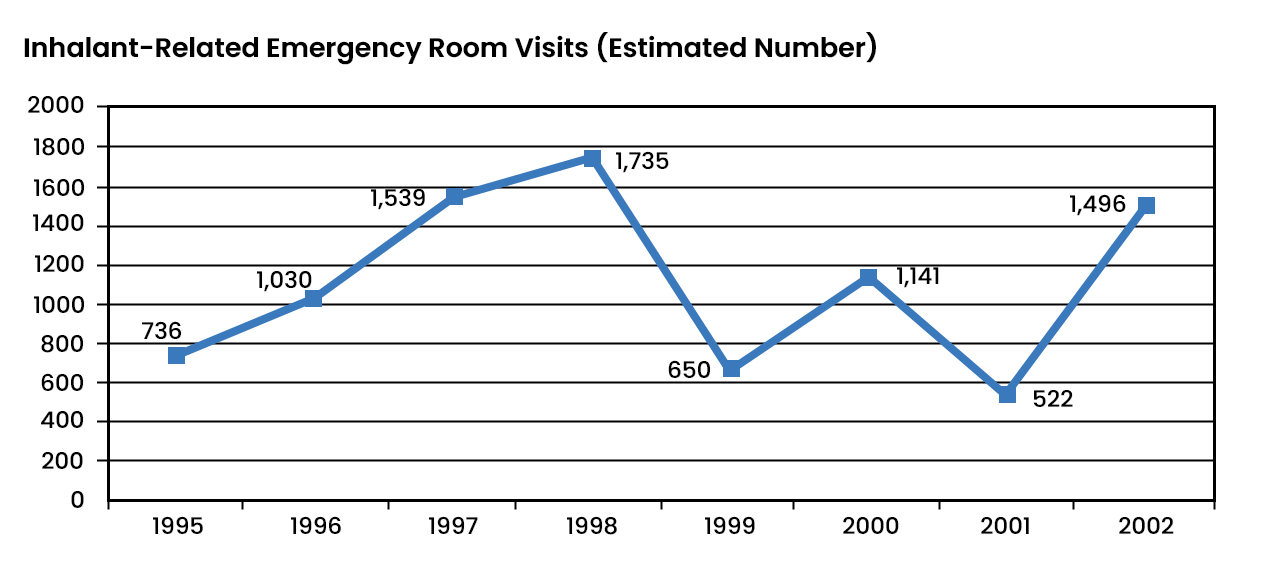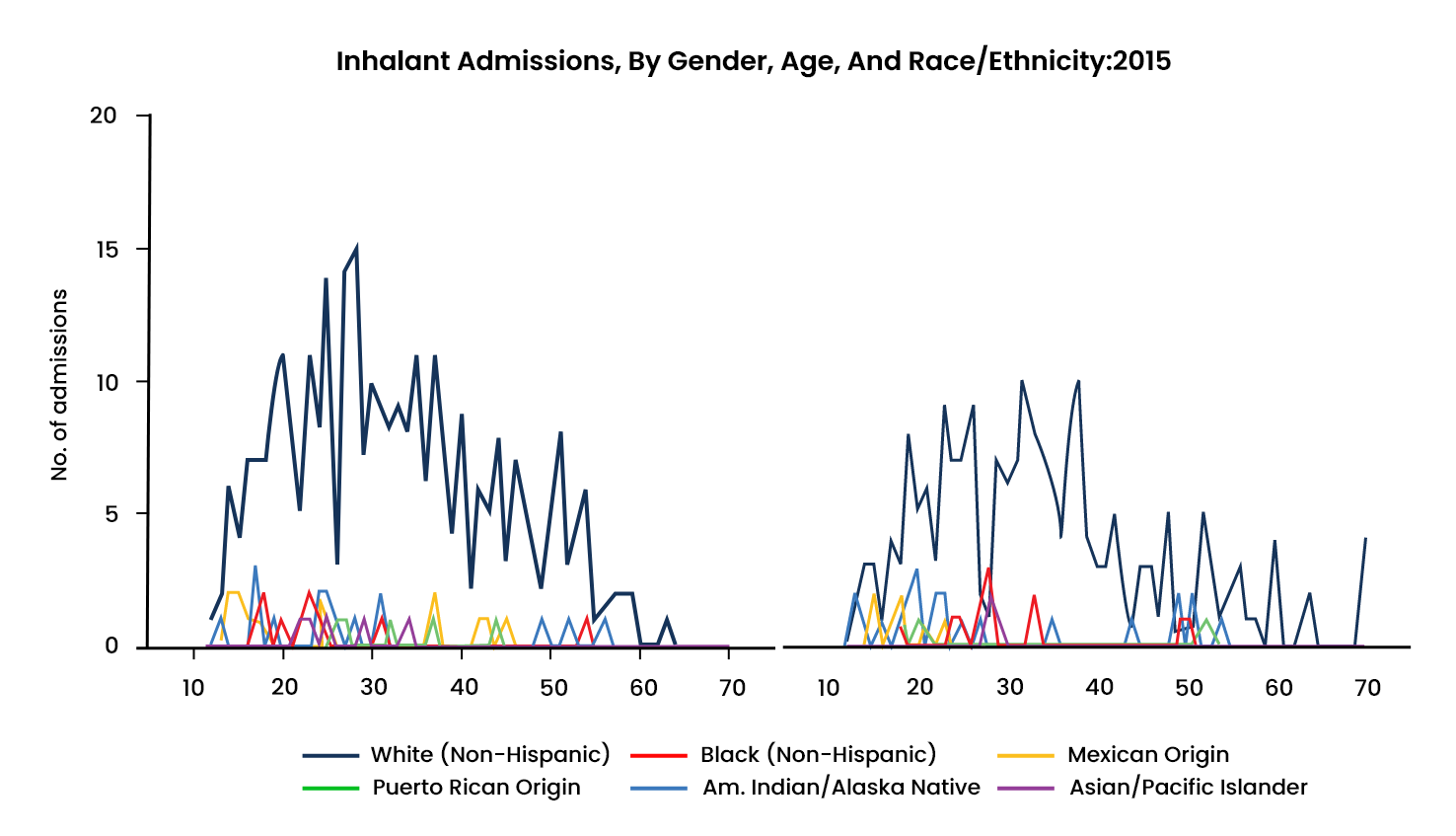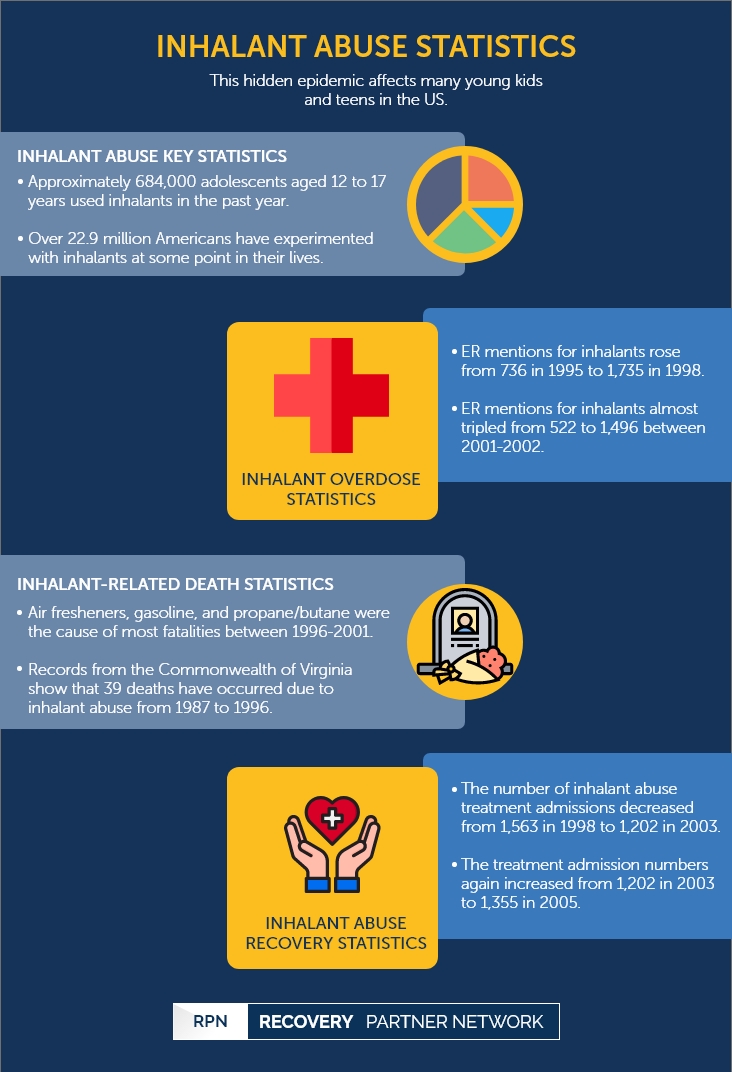This hidden epidemic affects many young kids and teens in the US.
Inhalant Abuse Statistics
Substance use disorder
- Alcohol abuse statistics
- Amphetamine abuse statistics
- Cannabis abuse statistics
- Cocaine abuse statistics
- Heroin abuse statistics
- Illicit drug abuse statistics
- Inhalant abuse statistics
- Methamphetamine abuse statistics
- Opioid abuse statistics
- Prescription Drug abuse statistics
- Tobacco abuse statistics
Inhalant abuse statistics | Table of Contents
Inhalant Abuse
Inhalants are legal and easily accessible products that can be found around your home, including markers, gasoline, spray paint, felt-tip, and glue. These products are safe when used as intended, but when the vapors from these substances are deliberately inhaled to cause euphoria, they can be potentially toxic and sometimes deadly.
Factors such as easy access, easy-to-hide, and low price, make detection and prevention of inhalant abuse difficult. Individuals who use inhalants breathe in the fumes through their mouth or nose, typically by snorting, sniffing, bagging, or huffing. Inhalant abuse is common among young kids and teens in the US. It is a new phenomenon that is growing in concern.
Inhalant Abuse Key Statistics
- According to the National Institute on Drug Abuse (NIDA), About 21.7 million individuals in the US aged 12 and older have used inhalants at least once in their lifetime.
- According to the Monitoring the Future (MTF) survey, around 13.1 percent of 8th graders used inhalants.
- As per a Substance Abuse and Mental Health Services Administration (SAMHSA) report, approximately 684,000 adolescents aged 12 to 17 years used inhalants in the past year.
- Young kids and teens were more likely than adults aged 18 years or older to have used inhalants last year to get high (2.7 vs. 0.4 percent).
- Female adolescents were more likely than male kids and teens to have misused inhalants last month (3.2 vs. 2.3 percent).
- More than 22.9 million Americans have experimented with inhalants at some point in their lives.

Inhalant Related ER Statistics
Inhalant abuse can cause serious health complications, including an overdose. The toxic reaction caused by an inhalant-related overdose can lead to fatal consequences if left untreated. According to NIDA and National Capital Poison Center records:
- The rate of inhalant cases reported to US poison control centers has declined during the past two decades. The rate declined from 1993 to 2008.
- The prevalence was highest among adolescents aged 12 to 17 years, with the highest prevalence among 14 years of age.
- According to the National Drug Intelligence Center’s report published in 2005, ER mentions for inhalants gradually rose from 736 in 1995 to 1,735 in 1998, the highest total for any specified year.
- Between 2001 and 2002, ER mentions almost tripled for inhalants, rising from 522 to 1,496.

Inhalant-Related Death Statistics
One of the most harmful complexities of inhalant overdose is called “sudden sniffing death syndrome.” This occurs due to intense effects on the heart, causing immediate heart failure. This may even happen to healthy young adults the very first time they use an inhalant. Other than sudden sniffing death, the use of inhalants with a plastic bag or paper or in a confined area can lead to death from suffocation.
- According to records from the Commonwealth of Virginia, from 1987 to 1996, 39 deaths have been identified due to inhalant abuse.
- The age of death varied from 13 to 42 years, with most fatalities (70 percent) occurring at or below 22 years of age.
- Ninety-five percent of people were male, with volatile substance abuse fatalities responsible for 0.3 percent of all male deaths between 13 and 22 years of age.
- The main volatile substances used included gas fuels (46 percent), mainly propane and butane, chlorofluorocarbons (26 percent), chlorinated hydrocarbons and alkylbenzenes (21 percent), and other hazardous chemicals, including volatile anesthetics.
- As per data from the Toxic Exposure Surveillance System (TESS) of the American Association of Poison Control Centers, most inhalant fatalities between 1996 and 2001 were caused by three types of inhalants: air fresheners, gasoline, and propane/butane.
- These inhalants composed 53 percent of the cases reported to TESS during these years, and they were responsible for 82 percent of all reported inhalant fatalities.
Inhalant Abuse Recovery Statistics
Admission rates for inhalant abuse treatment have fluctuated in the last two decades, and the majority of patients were adolescents.
- The number of treatment admissions for inhalant abuse decreased from 1,563 in 1998 to 1,202 in 2003.
- The number of treatment admissions increased from 1,202 in 2003 to 1,355 in 2005.
- However, treatment admission numbers again dropped from 1,355 in 2005 to 1,224 in 2008.
- Inhalants were identified as the main substance of abuse by one-tenth of 1 percent of TEDS admissions aged 12 and older in 2008. Inhalants include ether, gasoline, glue, chloroform, nitrous oxide, or paint thinner.

Recovery Partner Network
We aim to educate and empower. If you feel our library of resources does not cover your specific need, reach out to us, and we would be happy to help.
STATISTICS
© Copyright 2025


